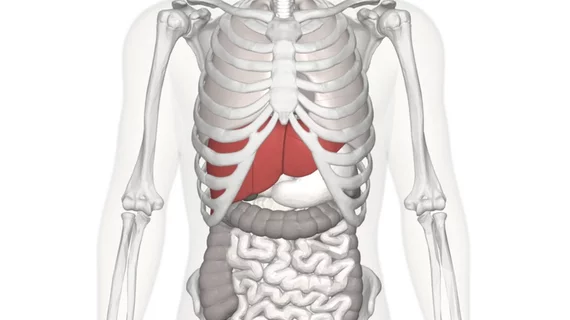Radiotracer is ‘excellent’ for imaging tumors in patients with liver cancer
A new radiopharmaceutical is earning praise for its ability to detect and stage neuroendocrine tumor patients with cancer that has spread to their liver.
Chinese researchers made the discovery recently after testing their 68Ga-DOTA-JR11 tracer in a small group of patients with the disease against another commonly used somatostatin receptor (SSTR) imaging agent. The results, published in the June issue of the Journal of Nuclear Medicine, proved that peptide-labeled tracers should be utilized according to a patient’s individual disease.
“What we’ve learned from this study is that peptides matter,” Wenjia Zhu, MD, a nuclear medicine physician at Peking Union Medical College Hospital in Beijing, China, said in a statement. “For patients with different metastatic patterns, different peptides should be used. In liver-dominant disease, 68Ga-DOTA-JR11 may be a better choice in tumor staging and restaging compared to 68Ga-dotatate.”
Somatostatin receptors are the main imaging and therapy targets in individuals with neuroendocrine tumors. And while 68Ga-labeled peptide tracers are the usual agent of choice, newly created “peptide antagonists” have been gaining traction. The latter identify and then block SSTR’s, while legacy radiopharmaceuticals bind to SSTRs and force a response.
With this in mind, Zhu and colleagues completed a head-to-head evaluation of both 68Ga-dotatate and 68Ga-DOTA-JR11. They injected 31 patients on subsequent days and performed whole-body time-of-flight PET/CT scans up to one hour afterward.
After analysis, exams using 68Ga-dotatate showed higher normal-organ uptake in a number of areas, including the spleen, renal cortex, adrenal glands, pituitary glands, stomach wall, normal liver parenchyma, small intestine, pancreas, and bone marrow.
Using the new agent, however, they detected far more liver lesions as well as a superior target-to-background ratio compared to using 68Ga-dotatate.
“With antagonists, we now have an alternative to agonists,” Zhu noted, adding that having such options may also alter patients’ treatment strategies.
Going forward, the researchers expect to see antagonists used in many more theranostic approaches, they concluded.

